Study on Corrosion Behavior of Waterborne Polyurethane Coating with High Thermal Conductivity
Abstract
:1. Introduction
2. Materials and Methods
2.1. Preparation of Coating
2.2. Thermal Conductivity Measurement
2.3. Salt Spray Experiment
2.4. EIS Measurement
2.5. SKP Measurement
3. Results and Discussion
3.1. Thermal Conductivity
3.2. Topography Observation
3.3. EIS Results and Analysis
3.4. SKP Analysis
3.5. Protective Mechanism of the Composite Coating
4. Conclusions
Author Contributions
Funding
Institutional Review Board Statement
Informed Consent Statement
Data Availability Statement
Acknowledgments
Conflicts of Interest
References
- Wu, G.L.; Zhong, Y.; Ren, X.; Hao, J.; Wang, Q.; Wang, X.P. Atmospheric Corrosion State Evaluation Based on Surface Corrosion Morphology for Electrical Metal Frame Equipment in Chongqing Power Grid. Key Eng. Mater. 2019, 815, 89–95. [Google Scholar] [CrossRef]
- Li, N.; Jiang, Q.; Wang, F.S.; Xie, J.; Li, Y.; Li, J.; Wu, S. Emission behavior, environmental impact and priority-controlled pollutants assessment of volatile organic compounds (VOCs) during asphalt pavement construction based on laboratory experiment. J. Hazard. Mater. 2020, 398, 122904–122913. [Google Scholar] [CrossRef] [PubMed]
- Liu, S.; Gu, L.; Zhao, H.C.; Chen, J.; Yu, H. Corrosion Resistance of Graphene-Reinforced Waterborne Epoxy Coatings. J. Mater. Sci. Technol. 2016, 32, 425–431. [Google Scholar] [CrossRef]
- He, Y.J.; Boluk, Y.; Pan, J.S.; Ahniyaz, A.; Deltin, T.; Claesson, P.M. Corrosion protective properties of cellulose nanocrystals reinforced waterborne acrylate-based composite coating. Corros. Sci. 2019, 155, 186–194. [Google Scholar] [CrossRef]
- Yang, Z.F.; Ruan, J.J.; Huang, D.C.; Du, Z.Y.; Tang, L.Z.; Zhou, T.T. Calculation of hot spot temperature of transformer bushing considering current fluctuation. IEEE Access 2019, 7, 120441–120448. [Google Scholar] [CrossRef]
- Liu, G.; Zheng, Z.; Yuan, D.W.; Li, L.; Wu, W. Simulation of Fluid-Thermal Field in Oil-Immersed Transformer Winding Based on Dimensionless Least-Squares and Upwind Finite Element Method. Energies 2018, 11, 2357. [Google Scholar] [CrossRef] [Green Version]
- Milad, A.; Mehdi, A.; Rashid, M. Heat Analysis of the Power Transformer Bushings in the Transient and Steady States Considering the Load Variations. Appl. Therm. Eng. 2017, 121, 999–1010. [Google Scholar]
- Marcos, V.; Gonçalves, D.R.; Michel, B.H. Power Transformers Thermal Modeling using an Enhanced Set-Membership Multivariable Gaussian Evolving Fuzzy System. Electr. Pow. Syst. Res. 2021, 194, 107088–107099. [Google Scholar]
- Wang, F.Z.; Lawrence, T.D.; Yan, Q.; Huang, Z.X. Mechanical properties and thermal conductivity of graphene nanoplatelet/epoxy composites. J. Mater. Sci. 2015, 50, 1082–1093. [Google Scholar] [CrossRef]
- Ma, H.Q.; Gao, B.; Wang, M.Y.; Yuan, Z.Y.; Shen, J.B.; Zhao, J.Q.; Feng, Y.K. Strategies for enhancing thermal conductivity of polymer-based thermal interface materials: A review. J. Mater. Sci. 2021, 56, 1064–1086. [Google Scholar] [CrossRef]
- Burger, N.; Laachachi, A.; Ferriol, M.; Lutzc, M.; Toniazzo, V.; Rucha, D. Review of thermal conductivity in composites: Mechanisms, parameters and theory. Prog. Polym. Sci. 2016, 61, 1–28. [Google Scholar] [CrossRef]
- Kochetov, R.; Andritsch, T.; Lafont, U.; Morshuis, P.H.F.; Picken, S.J.; Smit, J.J. Thermal behaviour of epoxy resin filled with high thermal conductivity nanopowders. In Proceedings of the 2009 IEEE Electrical Insulation Conference, Montréal, QC, Canada, 31 May–3 June 2009; Institute of Electrical and Electronics Engineers (IEEE): Piscataway, NJ, USA, 2009; pp. 524–528. [Google Scholar]
- Bian, W.C.; Yao, T.; Chen, M.; Zhang, C.; Shao, T.; Yang, Y. The Synergistic Effects of the Micro-BN and NanoAl2O3 in Micro-nano Composites on Enhancing the Thermal Conductivity for Insulating Epoxy Resin. Compos. Sci. Technol. 2018, 168, 420–428. [Google Scholar] [CrossRef]
- Santosh, K.Y.; Jae, W.C. Functionalized graphene nanoplatelets for enhanced mechanical and thermal properties of polyurethane nanocomposites. Appl. Surf. Sci. 2013, 266, 360–367. [Google Scholar]
- Shi, Q.; Zhu, A.P. Interface regulation of graphene/carbon nanotube on the thermal conductivity and anticorrosion performance of their nanocomposite. Prog. Org. Coat. 2020, 140, 105480–105486. [Google Scholar] [CrossRef]
- Song, H.F.; Kang, F.Y. Recent Progress on Thermal Conduction of Graphene. Acta Phys. Chim. Sin. 2021, 37, 2101013–2101028. [Google Scholar] [CrossRef]
- Sung, H.S.; Kwang, H.P.; Bo, H.M.; Yong, W.C.; Gwang, H.J.; Dong, J.L.; Byung, S.K.; Kyung, W.P.; Seokwoo, J. Enhanced Thermal Conductivity of Epoxy–Graphene Composites by Using Non-Oxidized Graphene Flakes with Non-Covalent Functionalization. Adv. Mater. 2013, 25, 732–737. [Google Scholar] [CrossRef]
- Zhu, D.H.; Qi, Y.; Yu, W.; Chen, L.F.; Wang, M.Z.; Xie, H.Q. Enhanced Thermal Conductivity for Graphene Nanoplatelets/Epoxy Resin Composites. J. Thermal Sci. Eng. Appl. 2018, 10, 11011–11015. [Google Scholar] [CrossRef]
- Biedenkopf, P.; Spiegel, M.; Grabke, H.J. High temperature corrosion of low and high alloy steels under molten carbonate fuel cell conditions. Mater. Corros. 1997, 48, 477–488. [Google Scholar] [CrossRef]
- Zhao, Z.H.; Guo, L.; Feng, L.; Lu, H.; Xu, Y.; Wang, J.N.; Xiang, B.; Zou, X.F. Polydopamine functionalized graphene oxide nanocomposites reinforced the corrosion protection and adhesion properties of waterborne polyurethane coatings. Eur. Polym. J. 2019, 120, 109249–109261. [Google Scholar] [CrossRef]
- Liu, Z.; Li, X.; Cheng, Y. Understand the occurrence of pitting corrosion of pipeline carbon steel under cathodic polarization. Electrochim. Acta 2012, 60, 259–263. [Google Scholar] [CrossRef]
- Hinderliter, B.R.; Croll, S.G.; Tallma, D.E.; Su, Q.; Bierwagen, G.P. Interpretation of EIS data from accelerated exposure of coated metals based on modeling of coating physical properties. Electrochim. Acta 2006, 51, 4505–4515. [Google Scholar] [CrossRef]
- Fu, T.; Tang, X.B.; Cai, Z.K.; Zuo, Y.; Tang, Y.M.; Zhao, X.H. Correlation research of phase angle variation and coating performance by means of Pearson’s correlation coefficient. Prog. Org. Coat. 2020, 139, 105459–105467. [Google Scholar] [CrossRef]
- Zhang, F.Y.; Liu, W.Q.; Liang, L.Y.; Wang, S.; Shi, H.Y.; Xie, Y.K.; Yang, M.P.; Pi, K. The effect of functional graphene oxide nanoparticles on corrosion resistance of waterborne polyurethane. Colloid. Surface A 2020, 591, 124565–124574. [Google Scholar] [CrossRef]
- Ye, Y.W.; Zhang, D.W.; Liu, T.; Liu, Z.Y.; Liu, W.; Pu, J.B.; Chen, H.; Zhao, H.C.; Li, X.G. Improvement of anticorrosion ability of epoxy matrix in simulate marine environment by filled with superhydrophobic POSS-GO nanosheets. J. Hazard. Mater. 2019, 364, 244–255. [Google Scholar] [CrossRef] [PubMed]
- Zhou, S.G.; Wu, Y.M.; Zhao, W.J.; Yu, J.J.; Jiang, F.W.; Ma, L.Q. Comparative corrosion resistance of graphene sheets with different structures in waterborne epoxy coatings. Colloid. Surf. A 2018, 556, 273–283. [Google Scholar] [CrossRef]
- Shi, P.; Niu, B.; Shanshan, E.; Chen, Y.; Li, Q. Preparation and characterization of PLA coating and PLA/MAO composite coatings on AZ31 magnesium alloy for improvement of corrosion resistance. Surf. Coat. Technol. 2015, 262, 26–32. [Google Scholar] [CrossRef]
- Yi, P.; Zhu, L.J.; Dong, C.F.; Xiao, K. Corrosion and interfacial contact resistance of 316L stainless steel coated with magnetron sputtered ZrN and TiN in the simulated cathodic environment of a proton-exchange membrane fuel cell. Surf. Coat. Technol. 2019, 363, 198–202. [Google Scholar] [CrossRef]
- Ye, Y.W.; Zhang, D.W.; Liu, T. Superior corrosion resistance and self-healable epoxy coating pigmented with silanzied trianiline-intercalated graphene. Carbon 2019, 142, 164–176. [Google Scholar] [CrossRef]
- Armstrong, R.D.; Wright, D. Polymer protective coatings—The distinction between coating porosity and the wetted metal area. Electrochim. Acta 1993, 38, 1799–1801. [Google Scholar] [CrossRef]
- Zhu, Y.F.; Xiong, J.P.; Tang, Y.M.; Zuo, Y. EIS study on failure process of two polyurethane composite coatings. Prog. Org. Coat. 2010, 69, 7–11. [Google Scholar] [CrossRef]
- Yi, P.; Xiao, K.; Ding, K.K.; Dong, C.F.; Li, X.G. Surface failure mechanism of PCB-ENIG in typical outdoor atmospheric environments. Mater. Res. Bull. 2017, 91, 179–188. [Google Scholar] [CrossRef]
- Yi, P.; Xiao, K.; Dong, C.F.; Zou, S.W.; Li, X.G. Effects of mould on electrochemical migration behaviour of immersion silver finished printed circuit board. Bioelectrochemistry 2018, 119, 203–210. [Google Scholar] [CrossRef] [PubMed]
- Ding, K.K.; Xiao, K.; Dong, C.F.; Zou, S.W.; Yi, P.; Li, X.G. Initial Corrosion Behavior and Mechanism of PCB–HASL in Typical Outdoor Environments in China. J. Electron. Mater. 2015, 44, 4405–4417. [Google Scholar] [CrossRef]
- Reddy, B.; Sykes, J.M. Degradation of organic coatings in a corrosive environment: A study by scanning Kelvin probe and scanning acoustic microscope. Prog. Org. Coat. 2005, 52, 280–287. [Google Scholar] [CrossRef]
- Wang, L.D.; Wu, W.D.; Sun, W.; Yang, Z.Q.; Wang, S.L.; Liu, G.C. Partially dehydrated zinc hydroxide sulfate nanoplates reinforced coating for corrosion protection. Chem. Eng. J. 2019, 373, 8–22. [Google Scholar] [CrossRef]
- Liu, T.; Wei, J.Y.; Ma, L.W.; Liu, S.; Zhang, D.W.; Zhao, H.C. Effect of polyaniline-based plate on the anticorrosion performance of epoxy coating. Prog. Org. Coat. 2021, 151, 106109–106119. [Google Scholar] [CrossRef]
- Nurul, H.O.; Mokhtar, C.I.; Mazli, M.; Nabihah, S.; Kok, E.K.; Rafida, A.J. Graphene-based polymer nanocomposites as barrier coatings for corrosion protection. Prog. Org. Coat. 2019, 135, 82–99. [Google Scholar]
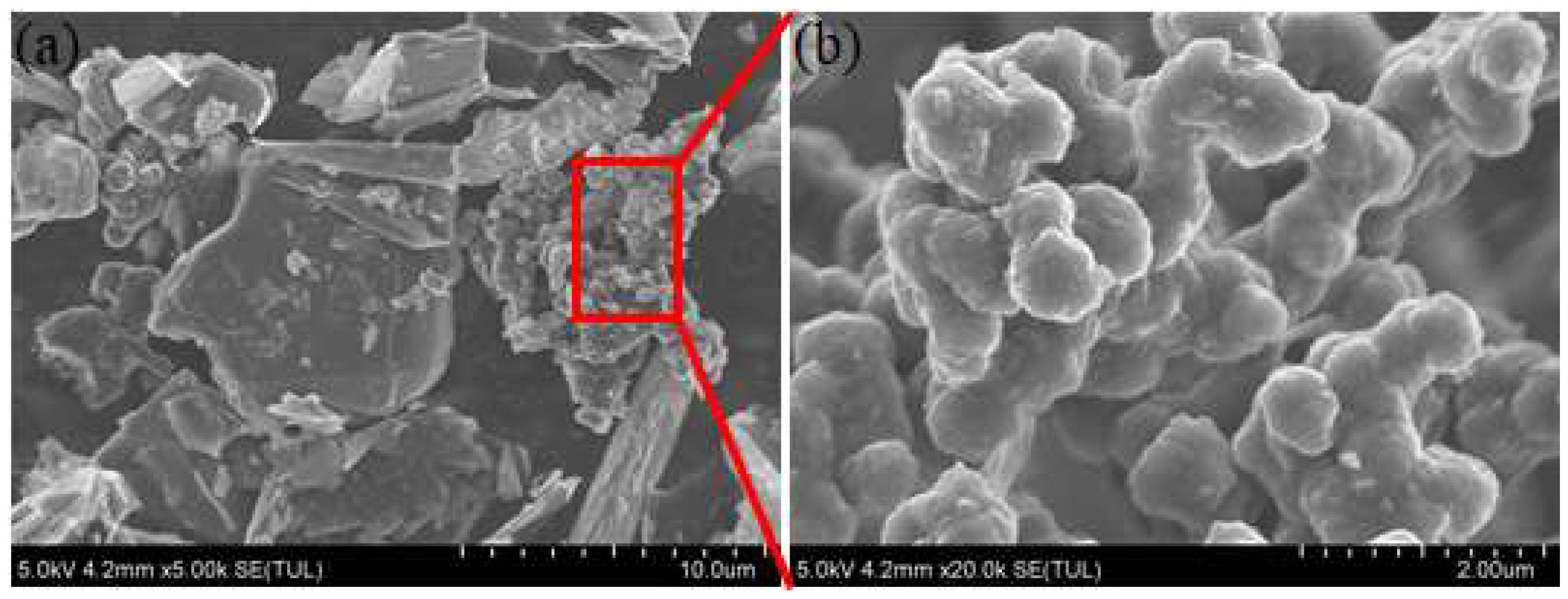
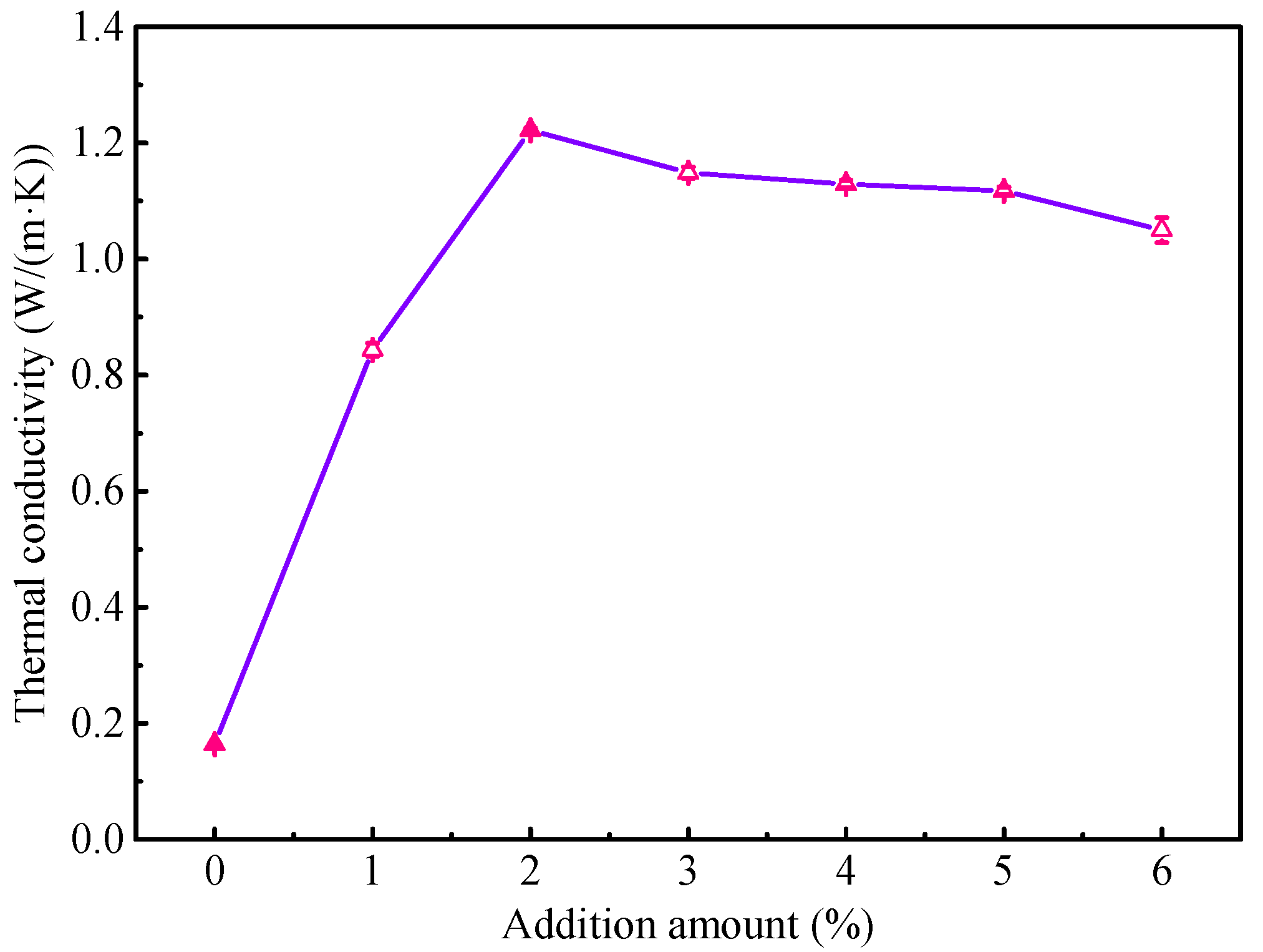

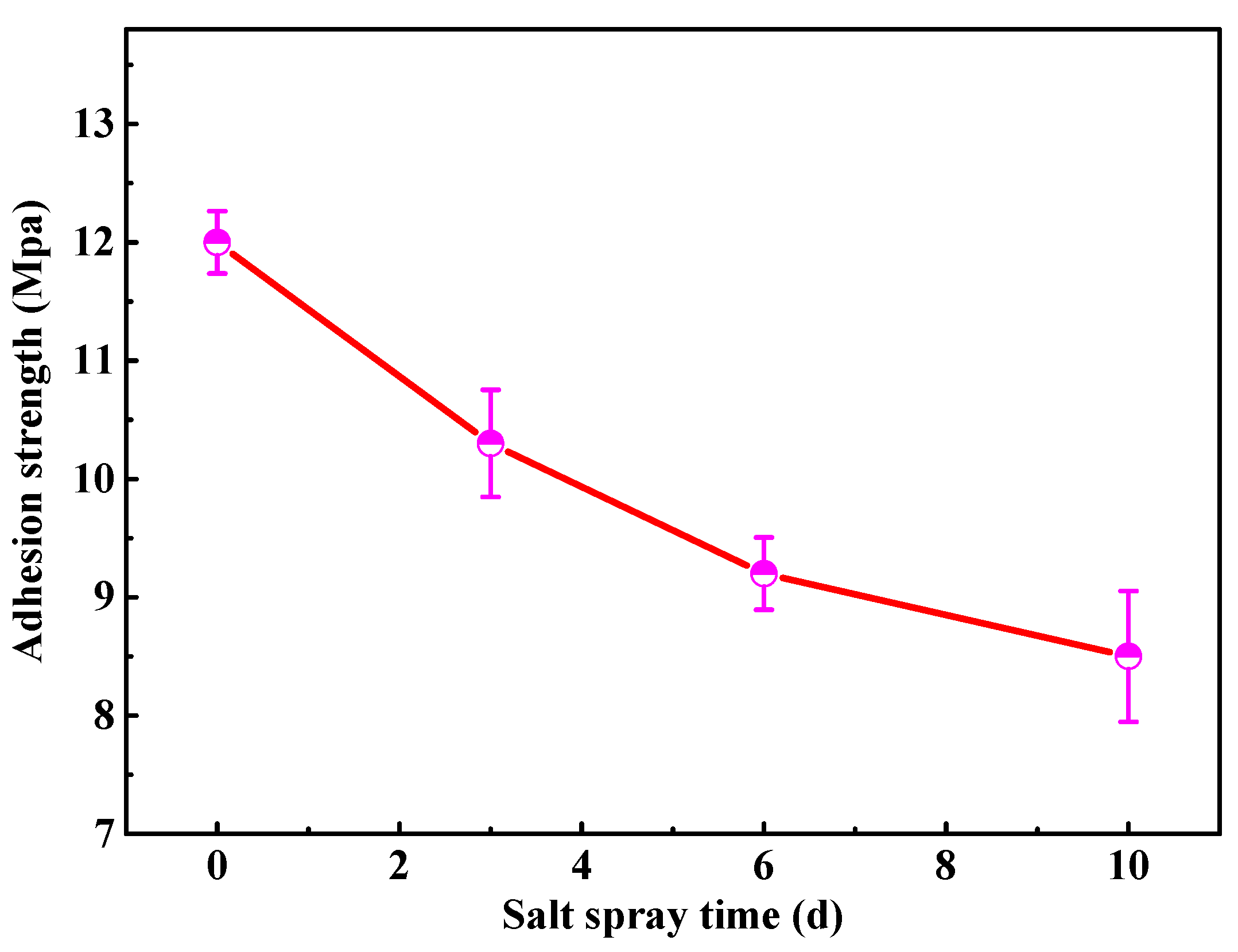
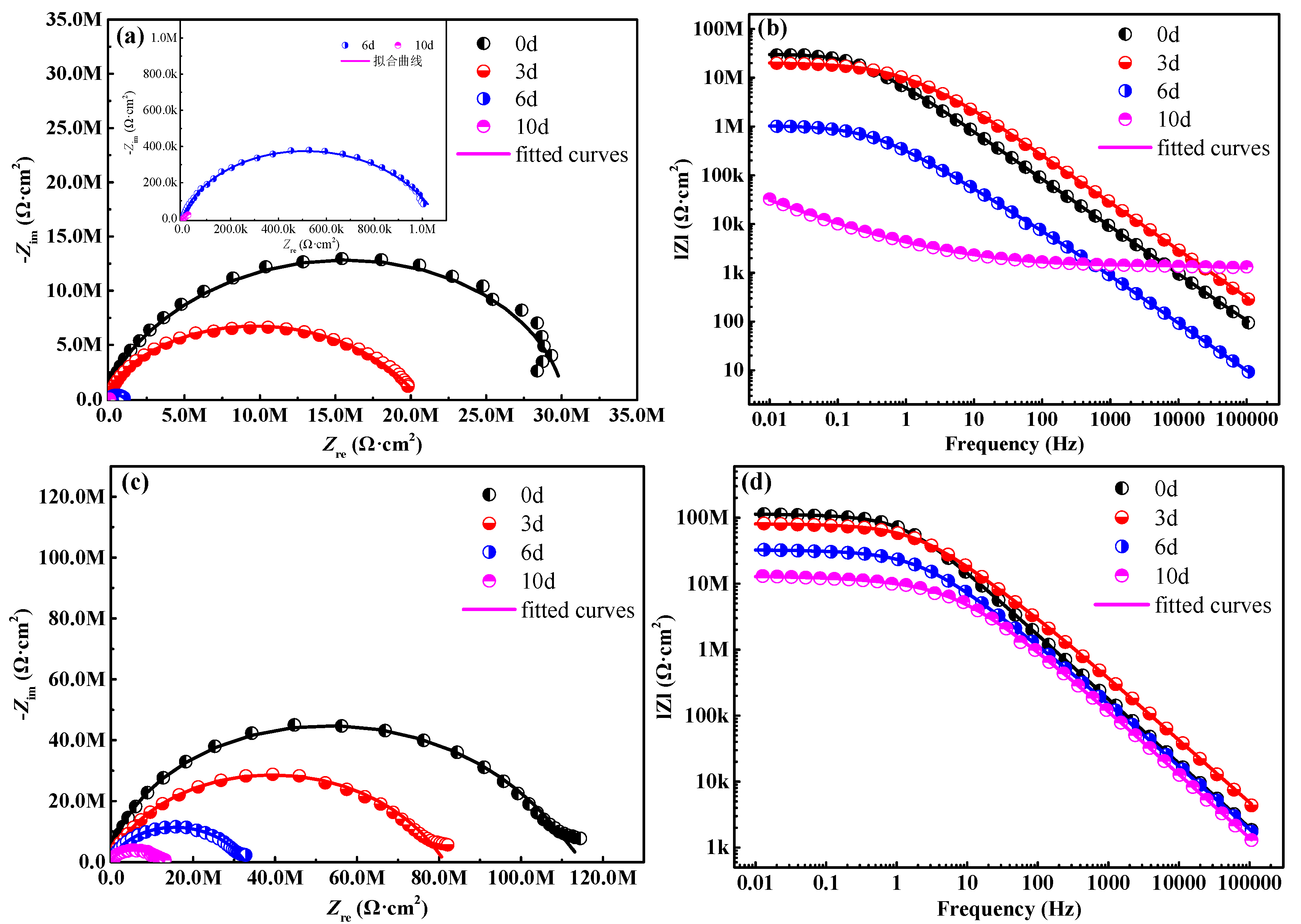

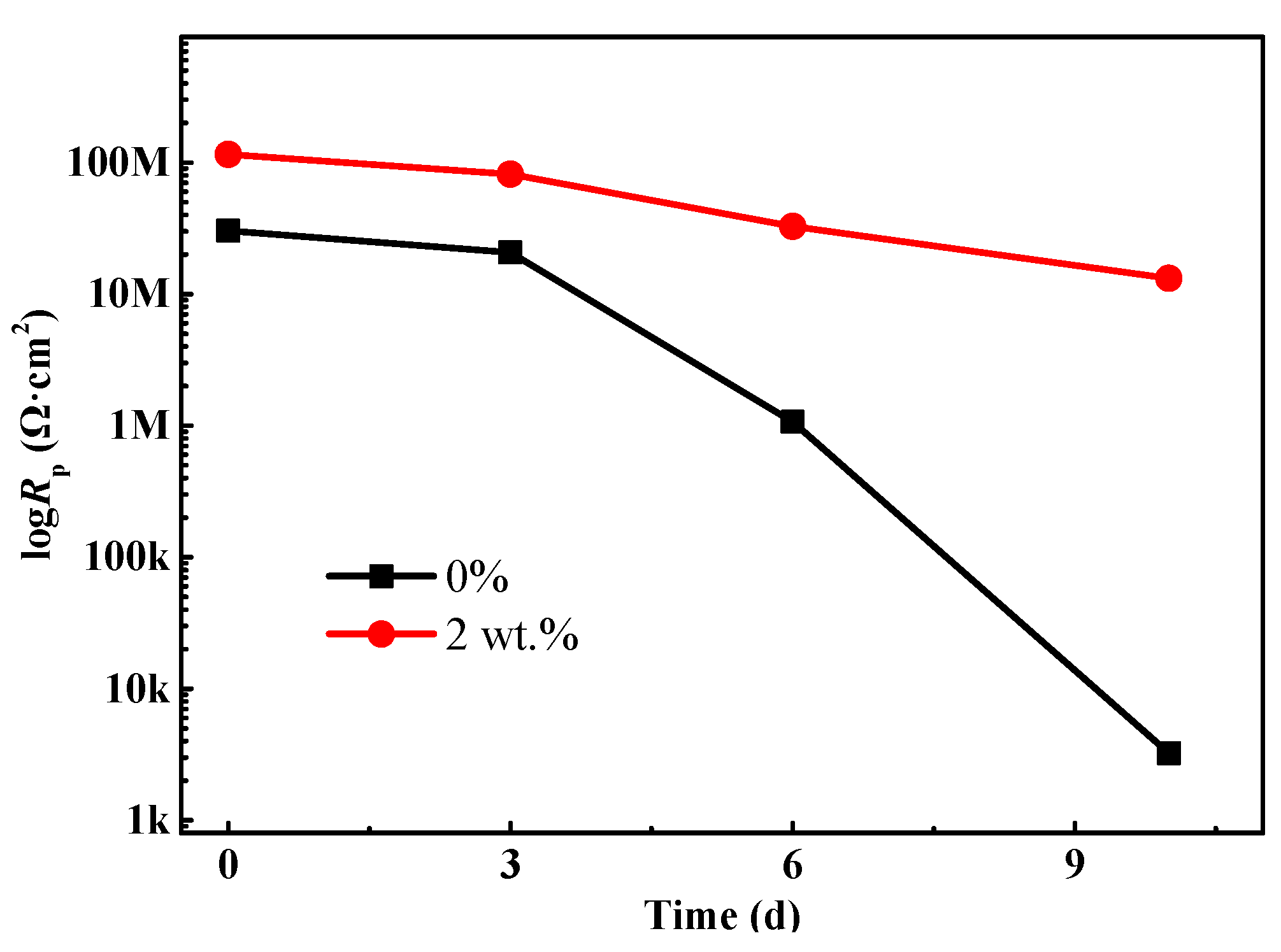
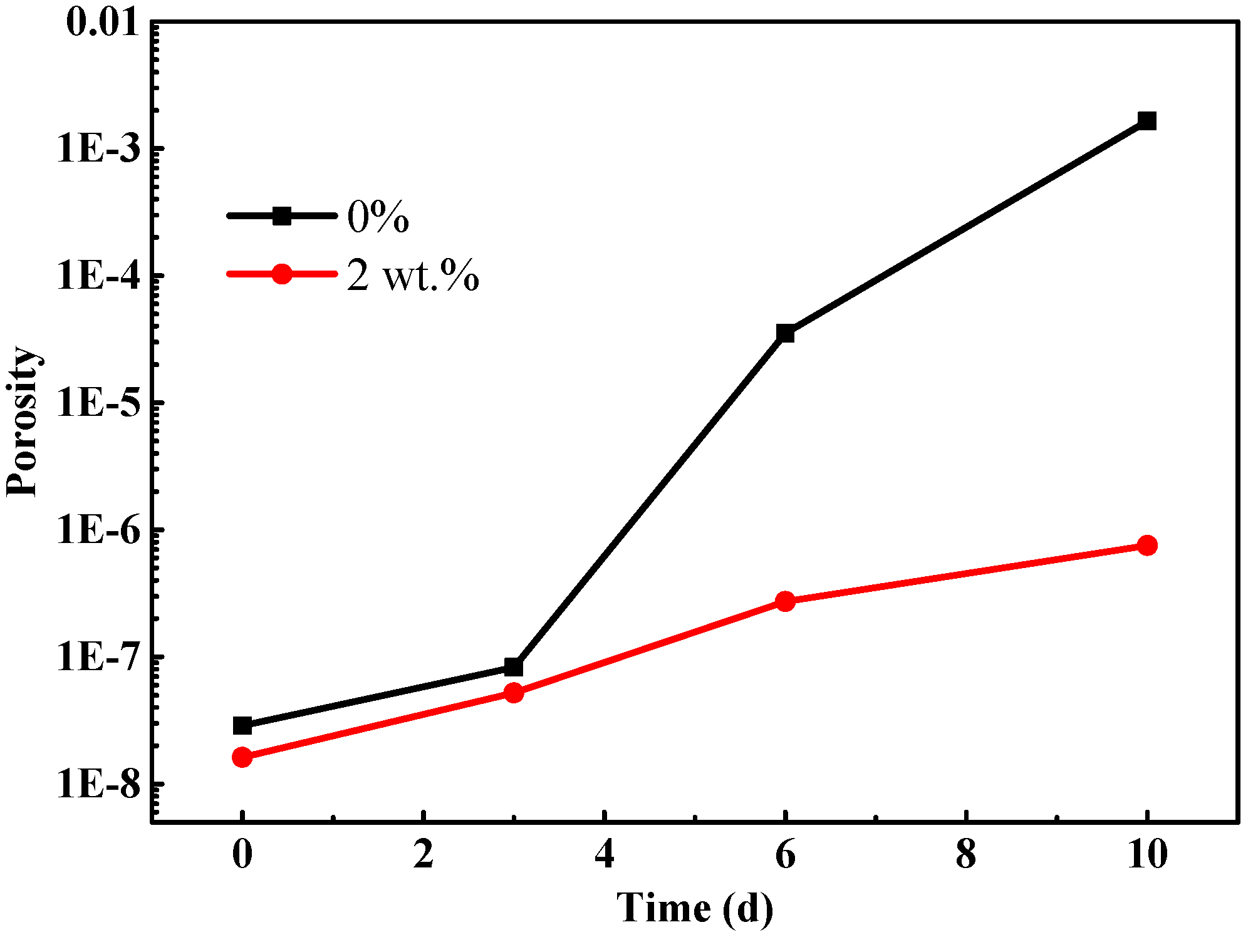
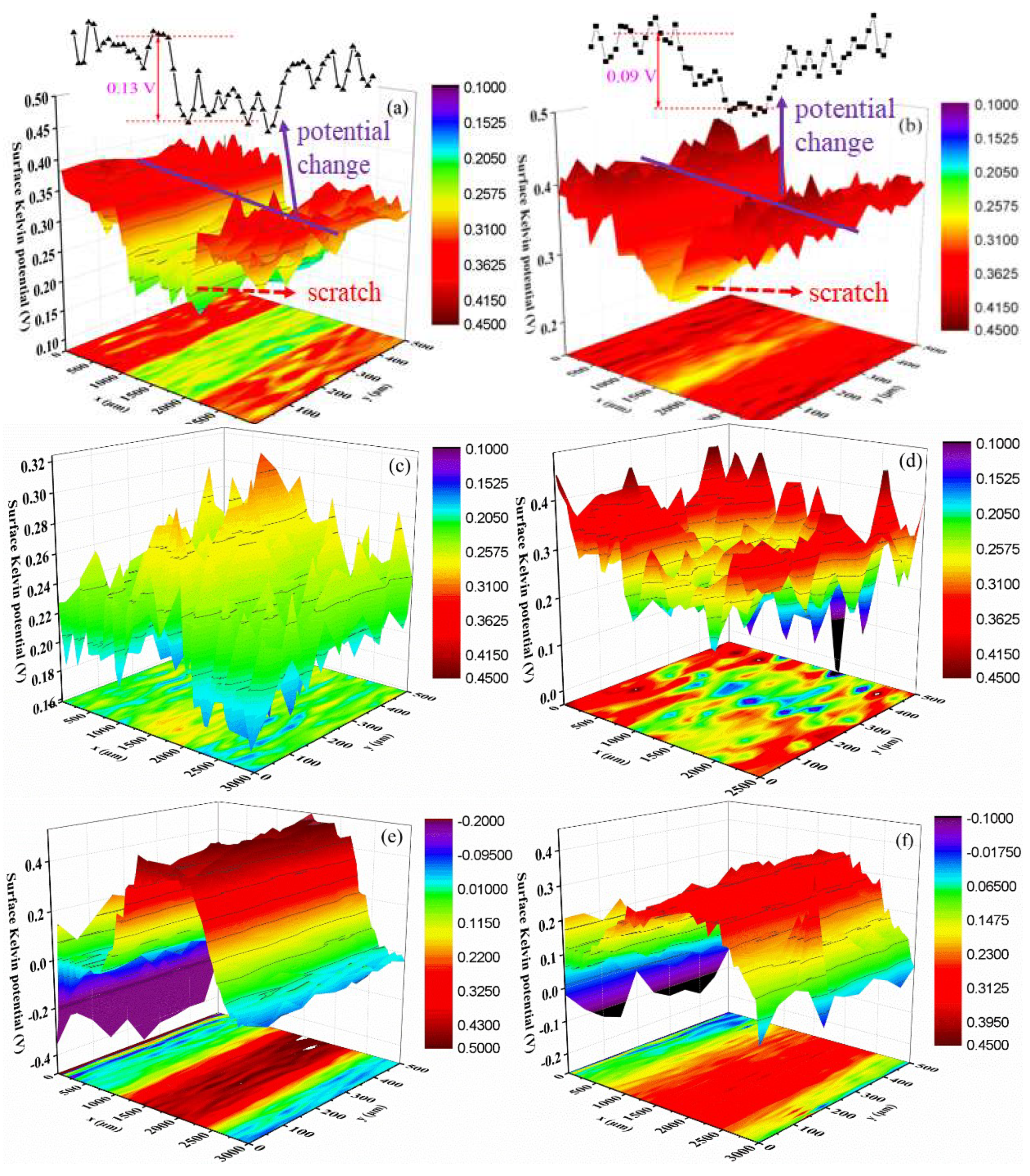
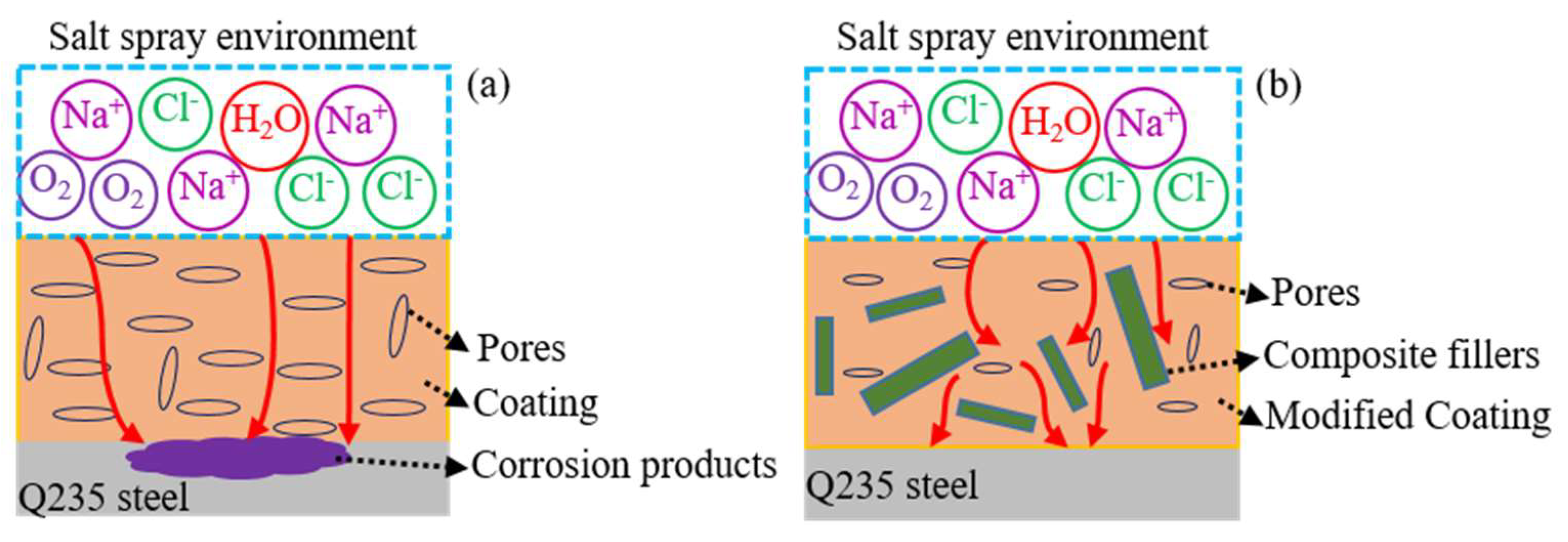
Publisher’s Note: MDPI stays neutral with regard to jurisdictional claims in published maps and institutional affiliations. |
© 2022 by the authors. Licensee MDPI, Basel, Switzerland. This article is an open access article distributed under the terms and conditions of the Creative Commons Attribution (CC BY) license (https://creativecommons.org/licenses/by/4.0/).
Share and Cite
Yi, P.; Mo, J.; Liu, R.; Fan, B.; Xiao, K.; Gao, J.; Zhou, H. Study on Corrosion Behavior of Waterborne Polyurethane Coating with High Thermal Conductivity. Appl. Sci. 2022, 12, 2021. https://doi.org/10.3390/app12042021
Yi P, Mo J, Liu R, Fan B, Xiao K, Gao J, Zhou H. Study on Corrosion Behavior of Waterborne Polyurethane Coating with High Thermal Conductivity. Applied Sciences. 2022; 12(4):2021. https://doi.org/10.3390/app12042021
Chicago/Turabian StyleYi, Pan, Juan Mo, Rui Liu, Baozhen Fan, Kui Xiao, Jin Gao, and Haifei Zhou. 2022. "Study on Corrosion Behavior of Waterborne Polyurethane Coating with High Thermal Conductivity" Applied Sciences 12, no. 4: 2021. https://doi.org/10.3390/app12042021
APA StyleYi, P., Mo, J., Liu, R., Fan, B., Xiao, K., Gao, J., & Zhou, H. (2022). Study on Corrosion Behavior of Waterborne Polyurethane Coating with High Thermal Conductivity. Applied Sciences, 12(4), 2021. https://doi.org/10.3390/app12042021




